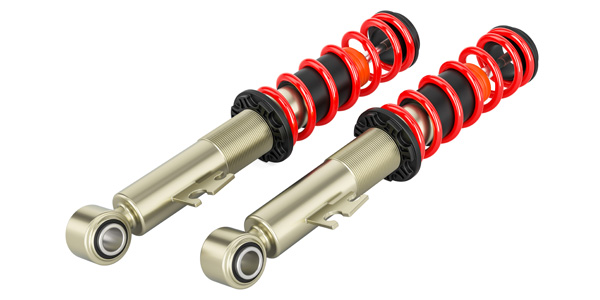
With the average vehicle age at 11.6 years, there are a lot of chassis parts nearing the end of their useful service – and many that have exceeded that life. Yet people keep driving on worn springs, shocks and struts because they don’t realize that these parts wear over time.
Shocks and struts are one of the most overlooked replacement opportunities on the road. They affect ride quality, handling, steering stability, tire wear and even stopping distance. A weak set of dampers can’t control suspension motions on a rough road. If the tires are skipping and bouncing when the brakes are applied, it will increase the distance it takes to stop. Worn shocks and struts that allow excessive wheel bounce also can produce a cupped wear pattern on tires. This will shorten tire life and create a rough, noisy ride.
Shocks and struts can lose their ability to control suspension motions as the miles add up. After 50,000 miles, some shocks and struts won’t offer as much resistance as when they were new because of worn piston seals and weakened internal valving. If the seat around the piston shaft at the top of a shock or strut fails, fluid can leak out and diminish the piston’s ability to dampen suspension motions. Loss of gas pressure from a gas-charged shock or strut also will reduce its ability to minimize fluid foaming, which can lead to “shock fade” (loss of control) under hard use or on rough roads.
A “bounce test” is one way to check a vehicle for weak dampers, but a more accurate method is to note how the body sways and rolls when cornering hard or driving in stiff crosswinds. If the nose dives excessively when braking hard, or the suspension bottoms out when backing out of a sloped driveway, or the steering shudders after hitting a bump, the dampers are probably overdue for replacement.
Struts are an important chassis part because they also are a structural component in the suspension. On many applications, they replace the upper control arm and serve as a steering pivot for the front wheels. A bearing plate on top of a MacPherson strut assembly allows the wheels to swivel and return with minimal effort. But, if the strut plate is worn, corroded or binding, it can increase steering effort and interfere with the wheels returning to the straight-ahead position after turning. Worn strut plates can rattle or clunk when the tires hit a bump or dip in the road. And, depending on the play in the strut plate, it may upset camber and/or caster alignment, which affects tire wear and steering stability.
Strut plates can be replaced separately, or included as part of a complete replacement strut assembly. Most technicians and DIYers prefer complete strut assemblies because they’re faster and easier to install, and come with new strut plates, dust boots and springs.
Struts with springs help support the weight of the vehicle. One concern is spring failure or breakage, which can happen as a result of corrosion. Coil springs are made of high-strength alloy steel, and many have a protective plastic coating to help prevent corrosion. If the coating is nicked or cracked, moisture can get between the coating and the spring, forming a corrosive hot spot that concentrates stress and eventually leads to cracking and spring failure. This can happen with strut springs as well as other coil springs.
Spring sag is a concern with all types of steel springs (coil and leaf) because they all experience a certain amount of sag as they age. Weak springs change suspension dynamics and upset wheel alignment (front and rear). This, in turn, has an adverse effect on tire wear, steering stability and handling. Spring sag can be checked by measuring ride height, front and rear, and side-to-side. If ride height is less than specifications, new springs are needed.











